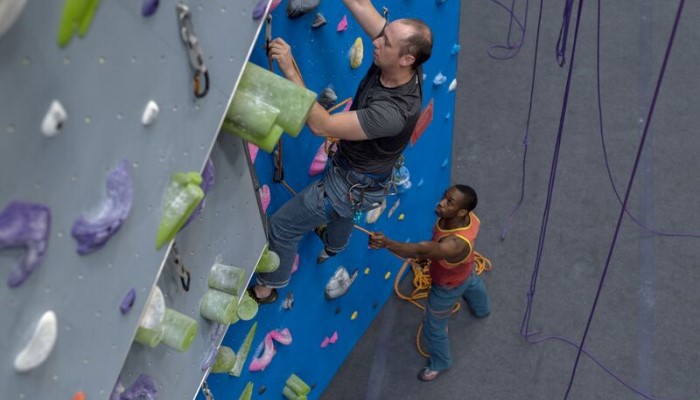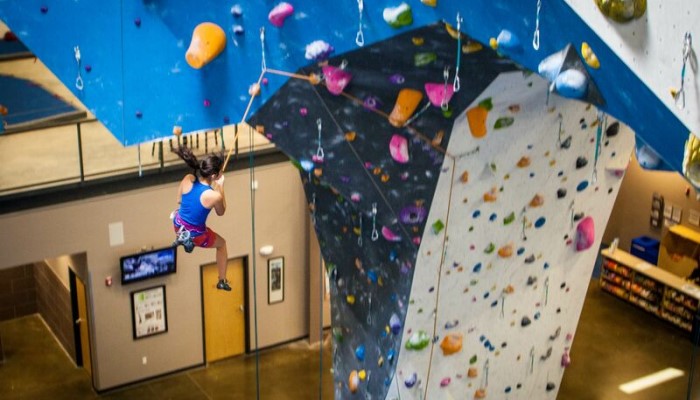Best Belaying Tips: How to Give a Soft Lead Catch
Lead climbing is what I love most about this sport. While climbing can primarily be described as an individual sport, there is almost nothing more important to a lead climber’s success than trusting their belayer. This trust allows the climber to focus 100% on their climb and to commit to those harder and scarier moves.
On the flip side, the fastest way to erase that trust is to give your climber a hard catch, which can happen if the lead belayer doesn't leave out enough rope while the climber is climbing. Hard catches can result in more than just a stunned climber, if your climber hits the wall hard enough, they could potentially hurt their ankles or hands.

There are many tips, tricks and techniques that climbers learn and develop over the years to make themselves the best belayer possible in all scenarios.
Here are three tips to giving your climbing partner a soft catch.
COMMUNICATE WITH YOUR PARTNER (BEFORE THE CLIMB)

One of the first and most important things you should be aware of is to know the difference in weight between you and your climber. Is your partner lighter than you? Be ready to jump when they fall. Is your climber heavier than you? Be prepared to go up on your toes and let you climber’s weight pull you up. Timing your catches is something you will learn over time, but without knowing what strategy will work best for you and your climber means that you are rolling the dice and hoping for the best.
KNOW THE TERRAIN (BEFORE THE FALL)

Just because the crux or hard section of the climb is at the top of the route does not mean that your climber will not fall before that. Working in a gym, I have seen climbers slip on “warm up” climbs and, because their belayer was not paying attention, take a hard fall that ended their session for that day. As a belayer, your climber’s safety is your responsibility and even if they don’t think they are going to fall you must always be ready for them to do so. In addition, watching and observing your partner throughout the whole route can help you detect when they might be struggling through a section and help you anticipate when they might fall. The more time you have to prepare for a fall, the more likely you are to time your jump properly and give your partner that perfect soft catch.
In addition, you should always know what kind of terrain your partner will be climbing on because that will affect how soft a catch can be given. If they are climbing on overhung terrain, most catches will be soft because the climber has more space and time to swing into the wall. On the opposite end, when your climber is on slab or vertical terrain, it can be harder to give a soft catch because there is less time to react.
An effective technique for giving softer catches on slab is to have one foot resting on the wall. This changes your jumping off point from the ground to a few feet in the air, increasing the distance your climber will fall and giving them more time to control their fall and spot their landing.
PAY ATTENTION (THE FALL)

Why do you need to jump and time it well? Timing your jump at the right moment increases the amount of rope in the system and therefore increasing the distance your climber falls. This extra distance gives your climber more time to spot their landing, which in turn, helps you give that soft catch. In addition, the extra rope allows the climber to fall in a more controlled arc, decreasing the speed with which they come into the wall.
CONCLUSION
At the end of the day, never forget that climbing is inherently dangerous. It takes practice to learn how to catch people safely and softly.
If you’d like more tips on providing a soft catch, check out your gym's upcoming Intro to Lead LAB classes.
Read this next: A Beginners Guide to Lead Climbing
Find a Movement Gym near you.

